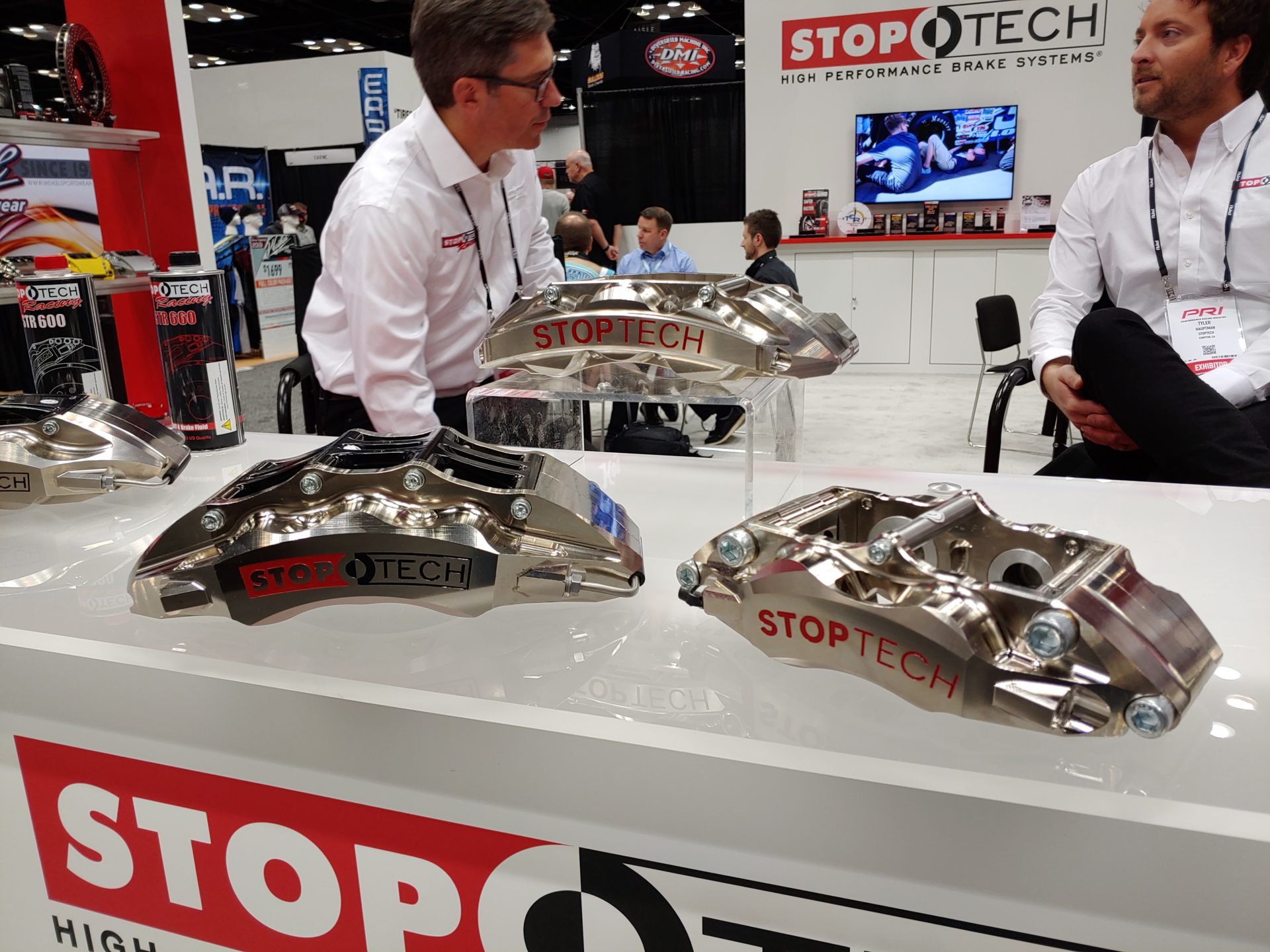
This is a billet 2JZ block from Bullet Race Engineering out of Australia. It’s a pretty intense piece of work. Bullet designed this block with race use in mind, featuring a set of LA sleeves at its core (which were custom designed by Bullet just for this block). It comes from the manufacturer with an 85mm bore which is expandable to 88mm by the end user.
The block features a 1/2″ head stud that extends much deeper into the block than on a normal 2JZ, and Bullet Race Engineering produces three versions. They have a traditional wet deck with OEM-style coolant passages. They have a dry deck which includes the water jackets but has no ports on the deck, which allows for a dry head gasket and far more boost. Lastly, they have a completely solid block that features no coolant passages whatsoever, designed for maximum power drag-only applications.
For $10,400 you can have one of your own, and that includes the head studs and freight direct from Australia.

ECU Master had quite a lot of interesting stuff in their booth. They had a super tiny circuit board with CAN-based inputs and outputs that you can embed into a steering wheel to build something like you’d see on a modern GT card with rotary dials, switches, and other indicators. They had a few different power distribution models of their own, also fully CAN controllable. But this little battery isolator caught my eye because it’s so darned tiny.
Weighing only 83 grams, this device is an FIA compliant isolator that features alternator load dump protection, two circuits for external controls, and can even be shut down via a CAN message. It’s also fully IP67 sealed.
Why is it that every time I finish a project on my race car, some new race thing comes out and then I want to re-do my whole car? Either way, I need to look more into ECU Master.

Yes, you read that correctly – S1 makes an adapter that simply replaces the factory Tremec T56 shifter assembly, and gives you full sequential gear shifting. Now, you’ll still need to use the clutch if you don’t have a face-plated / non-synchro gear set, but you get to press forward for down and pull back for up just like on any other sequential unit.
S1 offers configurations for both direct-mount and remote-mount T56 setups, covering most of the domestic GM, Ford and Dodge use cases as well as most swaps. You can opt for a remote gear display gauge, or you can configure your own display by reading the sensor that they provide on the shifter. To shift into reverse, simply shift all the way to neutral, move the reverse lever over, and then shift once more into reverse. This thing is super neat and I am really tempted to put one on Project SC300!

This wireless flagging system will soon be required by ChampCar in all vehicles, and is rapidly being adopted by several other racing series. The device comes with its own high-precision GPS and antennas, and can be easily powered via a cigarette lighter adapter or any other 5v power source.
The sanctioning body or event organizer has a central control system that knows where all of the devices are, and what their locations are on track. The system can be used for localized warnings (local yellow, track debris, etc) and the display in the vehicle will update accordingly. The system can also be used for black flagging individual drivers. Regulations will require that the device be mounted more or less in line-of-sight, and it features multiple ambient light detectors so that it can adjust its brightness accordingly. You won’t miss it.
If you’ve ever gotten tunnel vision while driving on track and failed to notice a flag, then this thing is for you. And, soon enough, you won’t have a choice anyway.
That wraps up our coverage for PRI 2019. There was a lot more that we got to see, but this was what I felt was notable and interesting enough to share. I can’t wait to see what the industry comes up with in the next year!




8 comments
I’d like to see a study on the differences between split calipers like the stoptechs and forged monoblock calipers like AP/Alcons. Other than saving a few grams what do you get for a 50% price hike?
I’ve thought about putting a Fueltech ECU dash on my miata on and off since I heard about them. The support is what’s holding me back, there is a huge community of Megasquirt miata owners that can offer support. But the FT450 looks like a badass deal to me, ECU + dash + datalogger, it even has an internal MAP sensor.
I mean, it really wouldn’t be that hard of a test to do, just expensive as it’s not like they give the suckers away. You’re also going to have to try to be apples to apples, as I have a strong suspicion that some parts of AP, Alcon, PFC etc’s lineup have picked different values on the compromise scale of stiffness vs weight or are designed with different constraints. A lot of the high buck monoblock calipers are built to specific classes/configurations. Like, just as a for example, I think the STR60GT is (I think) a similar pad shape/volume to the Alcon TA6 caliper, but will it fit as big of a rotor into a 16″ race wheel? Probably not, because Stoptech probably wasn’t designing for a specific class.
The max rotor size is a good argument I hadn’t though of. You can probably get the same stiffness and rotor/pad size for half the price by going with a split caliper but if you want the biggest rotor you can fit in a wheel then monoblock would be the only option.
Which is not anything against Stoptech IMO, it’s just a “stuff designed to the limits of rules for specific applications will do better at that then a generalist design” thing.
@Nicolas Girard
Most modern racing ECUs have internal MAP as well as some level of logging. It’s really the integrated dash that is the bonus, as that’s generally a $600+ option from just about any other vendor.
For a non-forced-induction BP6 (I’m assuming NA/NB motor that doesn’t even have VVT) you really are fine with anything. If your motor is already running on the Megasquirt, you could go with one of the logging dashes like the AEM CD7-L. It’s pricey, but would round out everything you need, and in the future you could use any other ECU with that setup.
If you don’t have anything yet, the FT450 could be a great option, and the support should be pretty good. FuelTech is based right around the corner from me in Georgia and they’re super friendly. Most of your “issues” would be around wiring (no plug-and-play FT450-BP6 harness) and a base map (FuelTech probably doesn’t do many NA 4-cyls). But motors will run even with pretty bad maps and you just need to get it going well enough to get on the dyno =)
Thanks for the info, I’ve never installed an ECU myself, I’m looking at swaping my 200k miles BP6 to a later model engine BP4W or BPZ3 and the Megasquirt looks like the easiest option.
NA/NB miatas have chunky MAF sensors instead of MAP, I thought the megasquirt didn’t have an internal MAP (it does) because I’ve read about putting in a GM IAT/MAP sensor when you delete the MAF.
TIL: Turns out you do it because the MAF module you delete also has the intake air temp sensor inside, the GM part has the IAT and gives you a second MAP for barometric data.
For a first time, the plug in ECU with the wide user base is probably the more intelligent choice. The FT450 is still a great deal, it’s a bit cheaper than the MSpnpPRO, has a dash and real slick program.
The AEM dash is a cool piece but it is half the price of the Miata on its own. it would look off brand next to the knockoff Bride seats and cheapo NRG steering.
All good points. That MS3 Pro with a plug-and-play harness is going to work great. Good luck!
In theory the advantage of 1 piece calipers is less flex.
In practice I think would be hard to tell.